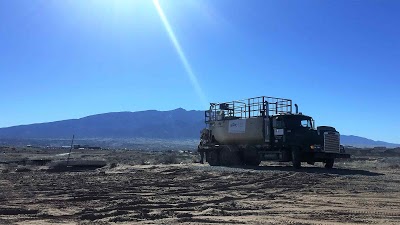Don’t Soil Yourself – You Will Succeed
- E2RC, LLC
- Apr 17, 2019
- 4 min read
Revegetation tips for those of us who can barely keep a cactus alive.
Stabilization is a key component to NPDES stormwater compliance. You need to plan to stabilize all disturbed areas whether through vegetative or non-vegetative methods.
Non-vegetative methods are those that likely are also permanent – parking lots, buildings, sidewalks, drainage structures. Vegetative methods are just what they sound like – leafy green methods that require seed, soil, water and sun.
MEASURE TWICE, CUT ONCE
Not all are blessed with a green thumb. Some are better suited to fake fauna or xeriscaping. But revegetation is necessary to meet the temporary and final stabilization requirements set forth in NPDES General Permits. Here are some factors to consider when developing a blossoming plan:
Pre - disturbance Conditions: Before tearing it up, identify the native vegetation in the area. How much of the area is covered by vegetation in general? What trees, shrubs, perennial and annual grasses are in the area? Using plants which you can see successfully grow in the soil and climate will give you a leg up during seeding operations.
Soil Type: There are six main types of soil - Clay, Sandy, Silty, Peaty, Chalky and Loamy. Each type varies in its nutrient and organic matter composition making some (Loamy) a dream for plant growth and others a nightmare (looking at you Sand!). Understanding the type of soil and its composition will allow you to determine if additional soil amendments are necessary. Some companies provide a free soil test and will help identify possible soil amendments.
Climate: Climate heavily impacts successful seeding operations. Temperature, sunshine, average precipitation and heavy rainfall periods can work with or against your vegetation. Seeding in the winter may not be the best idea. Seeding before a monsoon season can provide free water to spur growth. Work with your seeding partners to pin down the best window to seed based on the seed type you use and the climate.
Topography: Is your site curvy? Are there hard – to – reach spots? The topography will influence the seeding method you utilize. Steep slopes may require additional soil preparation, erosion control blankets or mulch to protect the seed as it grows.
A RECIPE FOR SUCCESS
The factors above will guide you to choose your seed mix, seeding method, timing and if additional amendments would boost seed germination.
If your project does not have a specified seed mix and rate (Pure Live Seed, “PLS” per acre) we recommend reaching out to local seed supplier. They will recommend an appropriate seed mix based on the site’s location, climate, altitude, etc.
Soil amendments are the secret ingredient in your recipe. Fertilizers, compost and conditioners improve soil conditions or texture to adjust the available nutrients and soil chemistry to stimulate germination. Adding amendments to soil can offset a pH issue, help the soil retain moisture, reset alkalinity issues and balance nitrogen, phosphorous and potassium compositions.
There are three general seeding methods: drill seeding, broadcast seeding and hydroseeding. Which method to utilize depends on the site terrain, accessibility, seedbed, seed characteristics and timing.
Drill seeding is generally utilized for flatter areas that are not rocky. Usually coupled with discing the soil bed, drill seeding drops the seed into furrows and then provides a light soil cover as the drill box passes. Drill seeding gives you great flexibility to modify furrow depths, metering seeding rates and solid coverage.
Broadcast seeding scatters or throws seeds in all directions as the broadcaster passes. It is a helpful method for those hard – to - reach places – steep slopes, rocky areas, tight spaces. Operators generally need to follow the broadcast seeding with raking or harrowing to give the seed some cover. Broadcast seeding can be more difficult to meter than drill seeding and could result is lower germination.
Hydroseeding is broadcast seeding on steroids. It uses pressurized spray to spread water mixed with the seed mix and any amendments, tackifiers or bonded fiber matrix (BFM) materials to coat the prepared soil bed. Hydroseeding is efficient in flat and sloped terrains as long as the area is accessible for large equipment and water is available.
Your ‘seeding window’ is the last major component to identify for your revegetation plan. A seeding window is the period of time most suitable to revegetate an area for successful germination. Temperature and precipitation are your main considerations. Seeding when the temperature is low and precipitation is high is prime time. Fall is a great season for seeding operations. It isn’t too hot, the soil should still be warm enough to prepare, and the seed can utilize moisture in the soil during winter to prepare to grow in spring. Seeding in advance of high precipitation windows is a great idea as well. Who doesn’t love free watering!?
E2RC is a leader in revegetation practices and agency specifications. We have seeded upwards of 2,200 acres across all project types throughout the southwest. We have worked with federal, state and city officials, homeowners and developers to prepare an effective seeding plan. We would be happy to help you design and execute your revegetation goals. Give us a call at (505) 867-4040 or reach out by email for additional information.


Comments